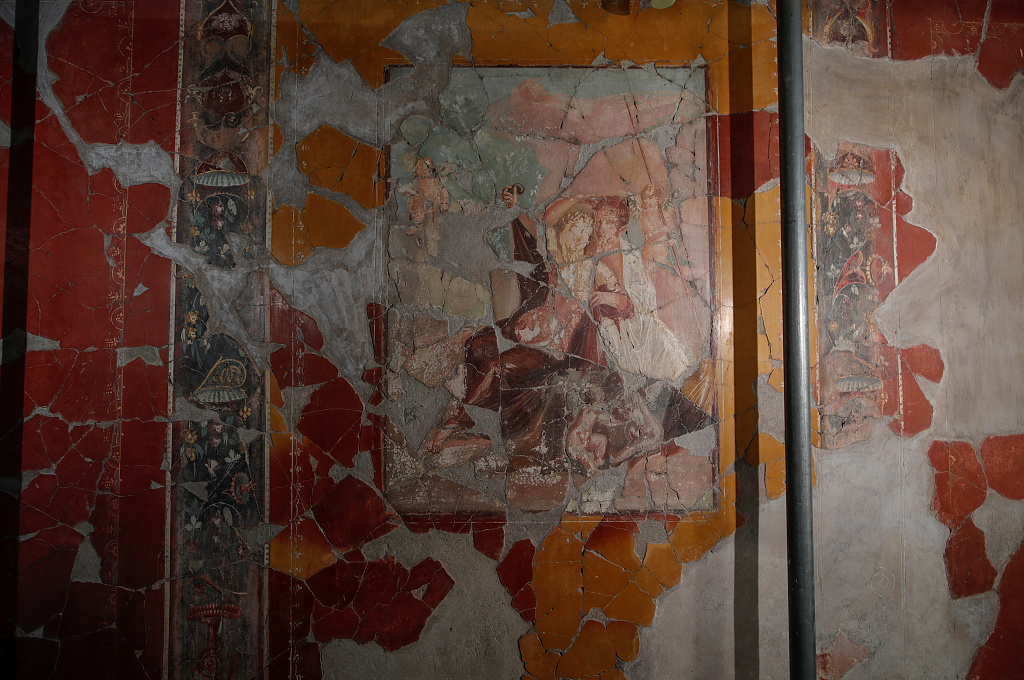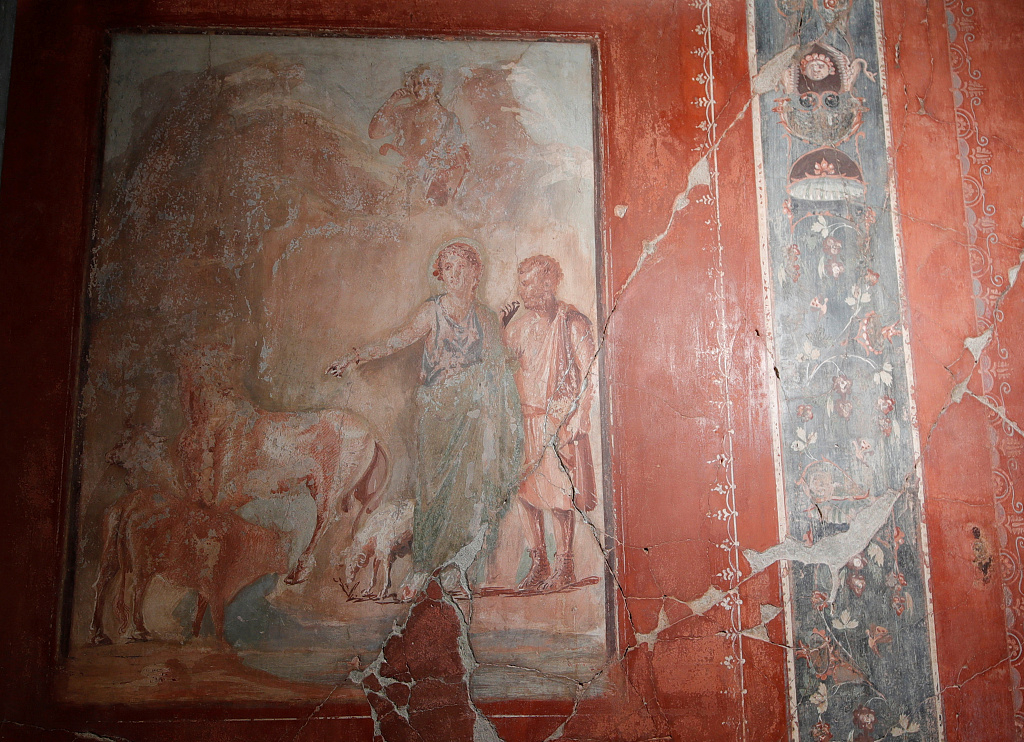The ancient House of the Bicentenary, or Casa del Bicentenario, reopened at the Italian archaeological site of Herculaneum near Naples after more than 35 years.
Less well-known and smaller than its neighbor Pompeii, Herculaneum was buried under about 20 meters of volcanic ash and rock following the devastating eruption of Vesuvius in 79 AD.
One of Herculaneum's best preserved Roman houses, the three-storey Casa del Bicentenario features stunning frescoes and mosaics which have undergone an extensive restoration process.
The frescoes feature mythological scenes and Dionysian themes which archaeologists say were common to the homes of Herculaneum's wealthy inhabitants.
"The reason we chose this room to study and conserve is because the wall paintings here are some of the most beautiful at the site, but also some of the most severely deteriorated," said Leslie Rainer, wall painting conservator from the Getty Conservation Institute.

A fresco displayed in the House of the Bicentenary as it reopens to the public after a 30-year restoration project, at the ancient archaeological site of Herculaneum, Italy, October 23, 2019. /VCG Photo
A fresco displayed in the House of the Bicentenary as it reopens to the public after a 30-year restoration project, at the ancient archaeological site of Herculaneum, Italy, October 23, 2019. /VCG Photo
Black and white photos of the paintings from 1938 show remarkably well-preserved images, but they had almost disappeared before the latest restoration work began.
"The wall paintings are so significant that it was a terrible shame to see them so deteriorated and not to have solutions for how to conserve them properly," Rainer told AFP.
The house became a laboratory for finding "new innovative treatment methods and materials that can be used here but also applied around the site and in the region for wall paintings that have similar conservation issues," said Rainer.
Not only was the room left exposed to the elements after it was excavated, but wax was applied to the paintings in a well-meaning but ultimately misguided attempt to preserve them.
"The combination of the dramatic environmental fluctuations with the wax covering the wall paintings led them to be pulled up and so they were flaking and powdering, so we had to find solutions."

Another fresco in the House of the Bicentenary, October 23, 2019. /VCG Photo
Another fresco in the House of the Bicentenary, October 23, 2019. /VCG Photo
After experimenting with different methods to try to preserve the paint and also remove the wax, a non-organic rigid gel solution was found and "we were able to actually remove that wax layer and have a stable paint layer underneath," Rainer said.
The wax method was used widely throughout the region and threatens the survival of many of the artworks it was meant to protect, but the experts working on the Bicentenary House hope this technique can be used to save them once its details are published.
"We hope that professionals can use this method for wall paintings that show similar issues around the whole region," said Rainer, as conservationists apply vivid colors to the newly revealed surfaces around her.
The 600-square-meter building was rediscovered in 1938 but was closed to the public in 1983 as it began to fall into disrepair.
Reopening the Casa del Bicentenario, Italy's culture minister Dario Franceschini said that Italy will continue to invest in the excavation and restoration of Ercolano and Pompeii.
Source(s): AFP